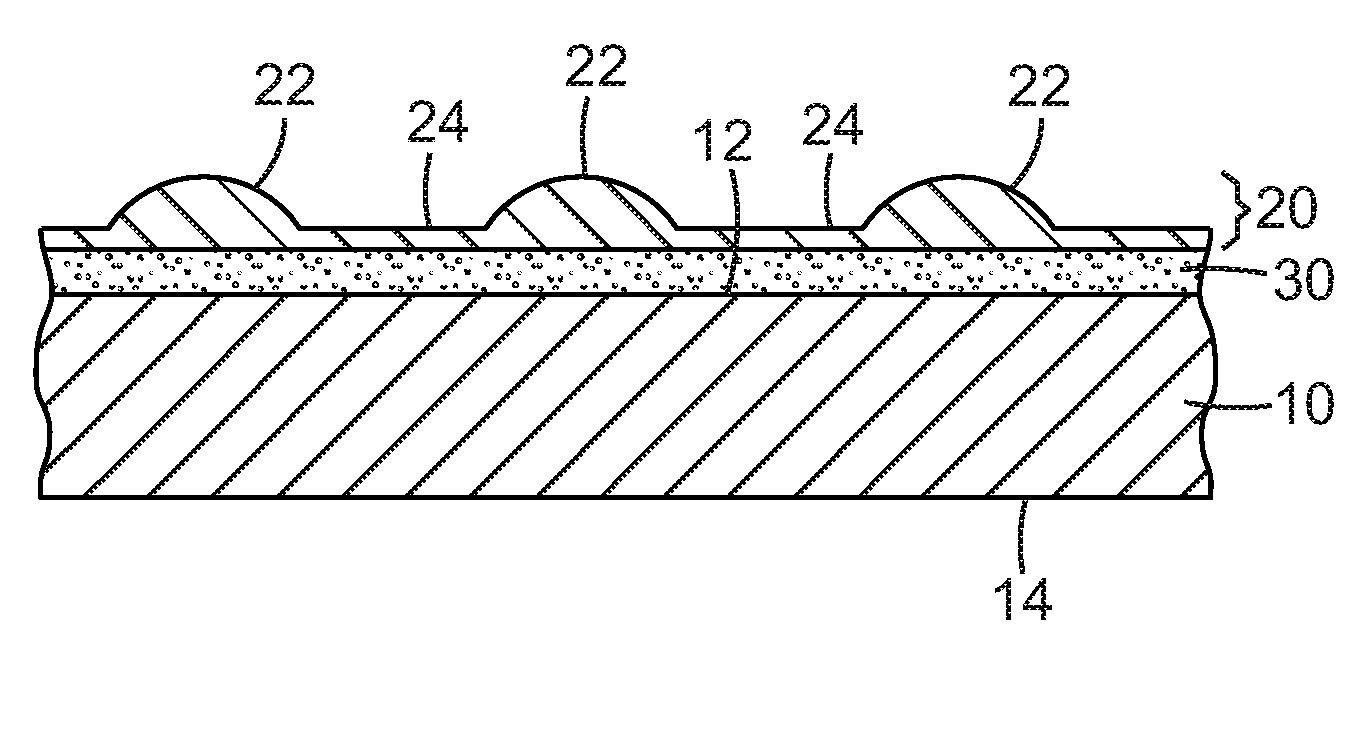Composite webs and methods of manufacturing same
a technology of composite webs and webs, applied in the field of composite webs, can solve the problem of particularly fragile skin layer
- Summary
- Abstract
- Description
- Claims
- Application Information
AI Technical Summary
Benefits of technology
Problems solved by technology
Method used
Image
Examples
example
[0108]The following non-limiting example is provided only to illustrate one method of manufacturing a composite web in accordance with some principles of the present invention.
[0109]A composite web was produced using a system similar to that shown in FIG. 5. A 75 mm diameter single screw extruder was used to deliver a molten polymer consisting of a blend of 70% by weight styrene-ethylenebutylene-styrene block copolymer (KRATON G1657), 30% by weight metallocene-catalyzed polyethylene (Engage 8452), and 2 parts per hundred TiO2 masterbatch (Clariant), at a melt temperature of approximately 235 degrees C to a neck tube.
[0110]The neck tube was connected to a die that delivered the molten polymer to the exterior surface of a steel forming roll having a circumference of approximately 185 cm. The die was designed to deliver the molten polymer in two separate stripes so as to deposit the molten polymer onto the portions of the forming roll bearing depressions, as described below. At the bas...
PUM
| Property | Measurement | Unit |
|---|---|---|
| thickness | aaaaa | aaaaa |
| thickness | aaaaa | aaaaa |
| thickness | aaaaa | aaaaa |
Abstract
Description
Claims
Application Information
 Login to View More
Login to View More - R&D
- Intellectual Property
- Life Sciences
- Materials
- Tech Scout
- Unparalleled Data Quality
- Higher Quality Content
- 60% Fewer Hallucinations
Browse by: Latest US Patents, China's latest patents, Technical Efficacy Thesaurus, Application Domain, Technology Topic, Popular Technical Reports.
© 2025 PatSnap. All rights reserved.Legal|Privacy policy|Modern Slavery Act Transparency Statement|Sitemap|About US| Contact US: help@patsnap.com



